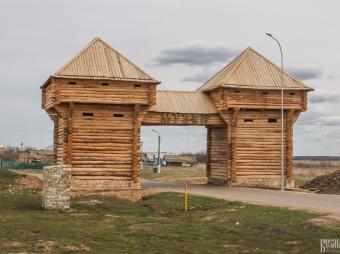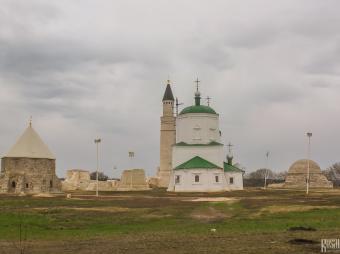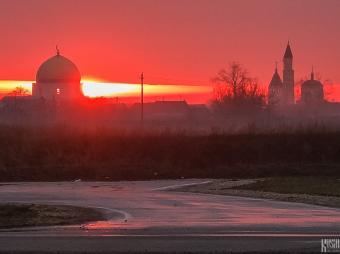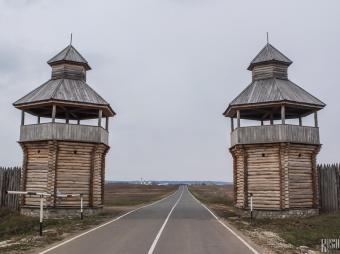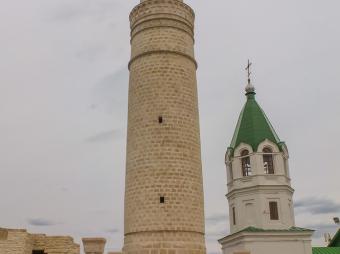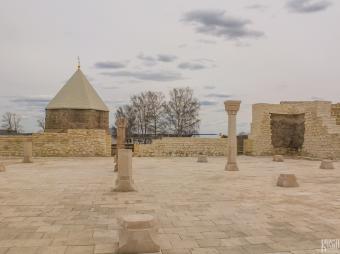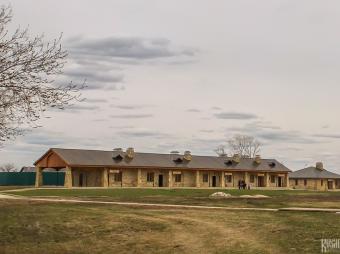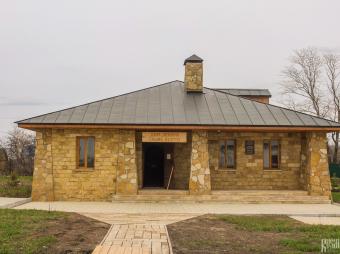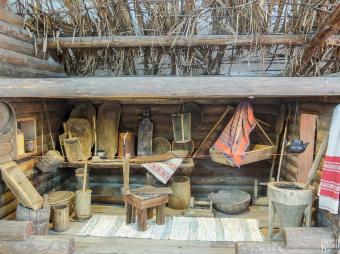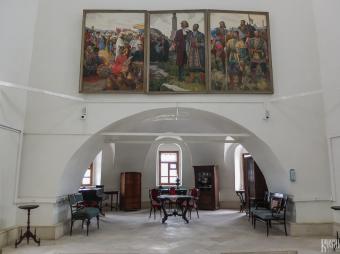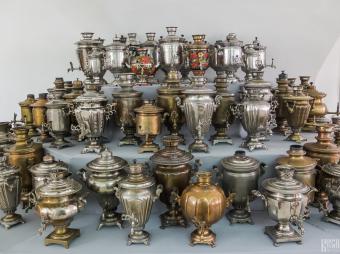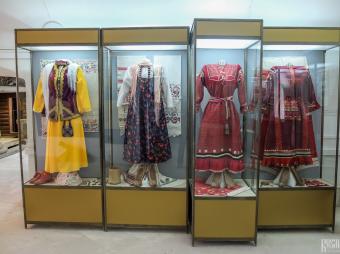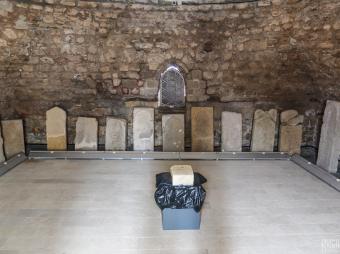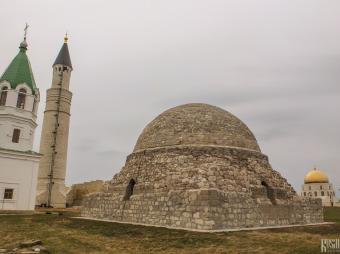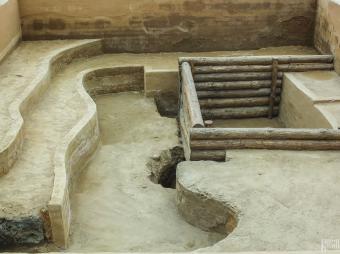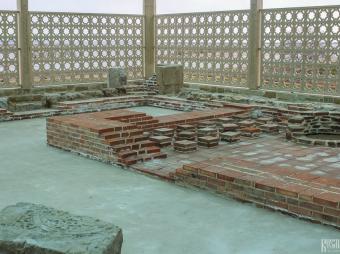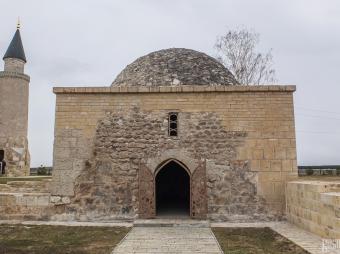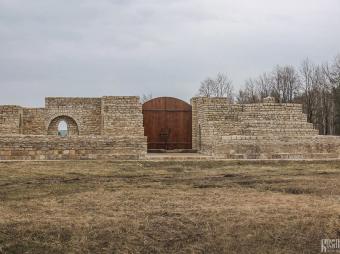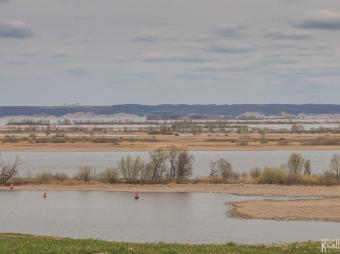Around the City
Bolgar Historical and Architectural Museum-Reserve

The most famous sight in Bolgar is the Bolgar Historical and Architectural Museum-Reserve which was established on the site of the ancient city of Bulgar - the original capital of the mediaeval state known as Volga Bulgaria. The museum-reserve was officially founded in 1969, but even before this the site has been popular with both tourists and Tatar Muslims who consider it a sight of pilgrimage and the spiritual capital of Tatarstan. The total area of the museum-reserve amounts to 415 hectares and several ruins and modern building can be found here. The main entrances to the museum-reserves are marked with reconstructions of wooden fortress gates. From the museum-reserve you can also get great views of the River Volga. Entrance to the territory of the museum-reserve is free of charge, but tickets must be bought for the Monument, the Archaeological Museum and the Doctor's House Museum Complex.
Monument to the Adoption of Islam as the State Religion of Volga Bulgaria in 922
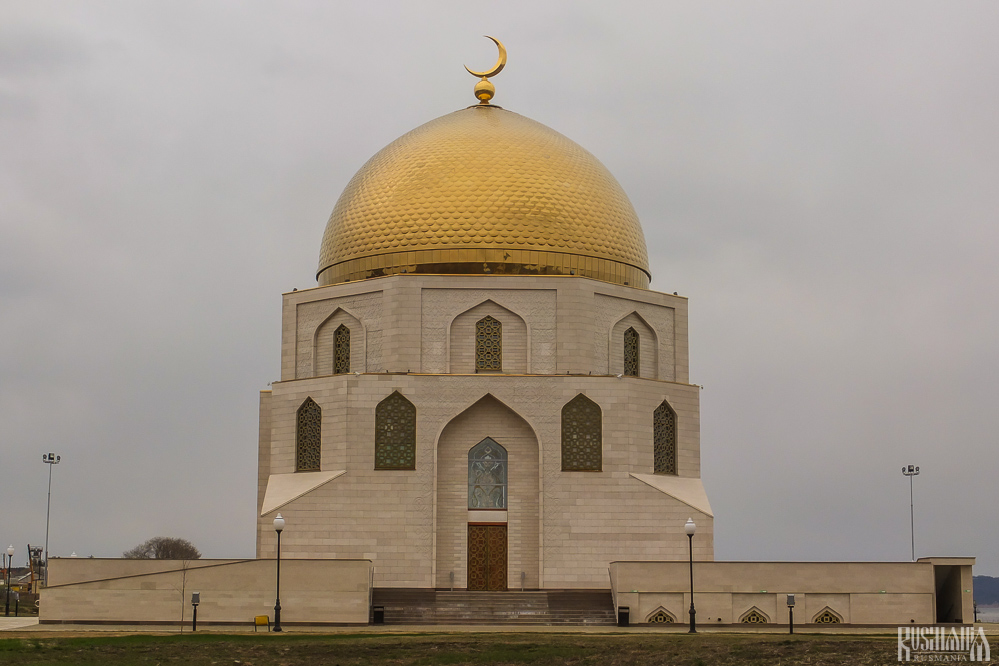
In 2012 the Monument to the Adoption of Islam as the State Religion of Volga Bulgaria in 922 was completed inside the museum-reserve as part of the special Renaissance (Vozrozhdenie) programme established to develop Bolgar and Sviyazhsk as cultural centres. You would be forgiven for mistaking this "monument" for a mosque though as the octagonal structure is topped with a golden dome and a crescent. Inside the monument holds an exhibition centre on the history of Volga Bulgaria which has displays containing archaeological finds and artwork. Most famously though the monument holds the world's largest Koran which was created in 2011, also as part of the Renaissance programme. The printed Koran was made in Italy and is 2 metres high, 1.5 metres wide and 25 centimetres thick. It is decorated with gold, silver and various gems, making it also the world's most expensive Koran. Before being moved to Bolgar the Koran was briefly on display in Kazan's Qol-Şärif Mosque.
Congressional Mosque
The main ruins within the museum-reserve are those of the Congressional Mosque, which dates from soon after the Mongol-Tatar conquest of Volga Bulgaria in the mid-13th century. The mosque was square in form with four corner towers and also served a defensive purpose. The Large Minaret on the northern side is a modern recreation as the original collapsed in 1841.
Archaeological Museum (Dormition Church)
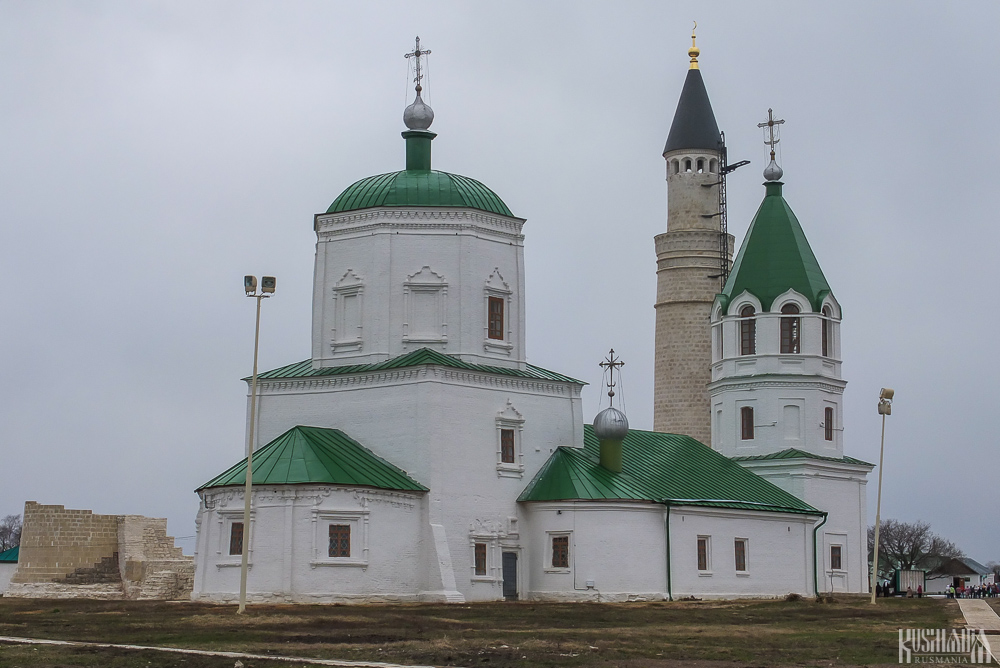
Immediately next to the Large Minaret is the Dormition Church. The orthodox was originally part of the Uspensky Monastery which was founded around 1712 on the site of the ancient Islamic ruins in what was seen as attempt to russify the region. The monastery though was dissolved in 1763 but its main church - the Dormition Church, remains. Today the church has been turned into the museum-reserve's Archaeological Museum, although in reality it is more focused on the history of the region in general. Taking centre stage is its large collection of samovars.
Northern Mausoleum
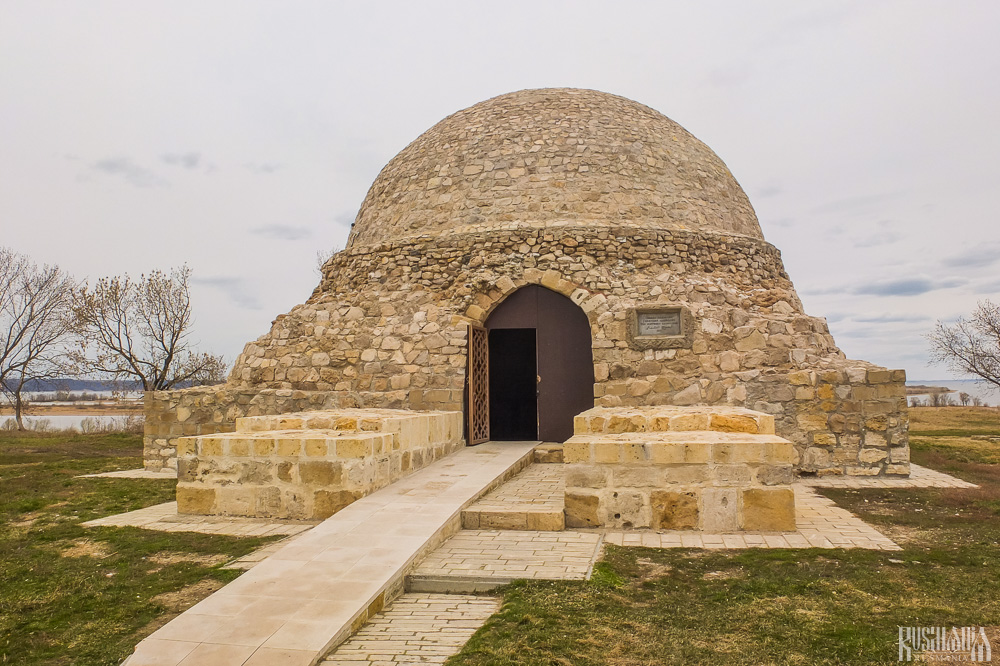
Next to the Congressional Mosque's ruins are two mausoleums, the Northern Mausoleum and the Eastern Mausoleum. The Northern Mausoleum dates from the 1330s. The structure's base is square but its top takes the form of a dome. Inside there are several ancient tombstones. The Northern Mausoleum is also known as the Monastery Vault as it was later used by the Uspensky Monastery for storing products.
Eastern Mausoleum
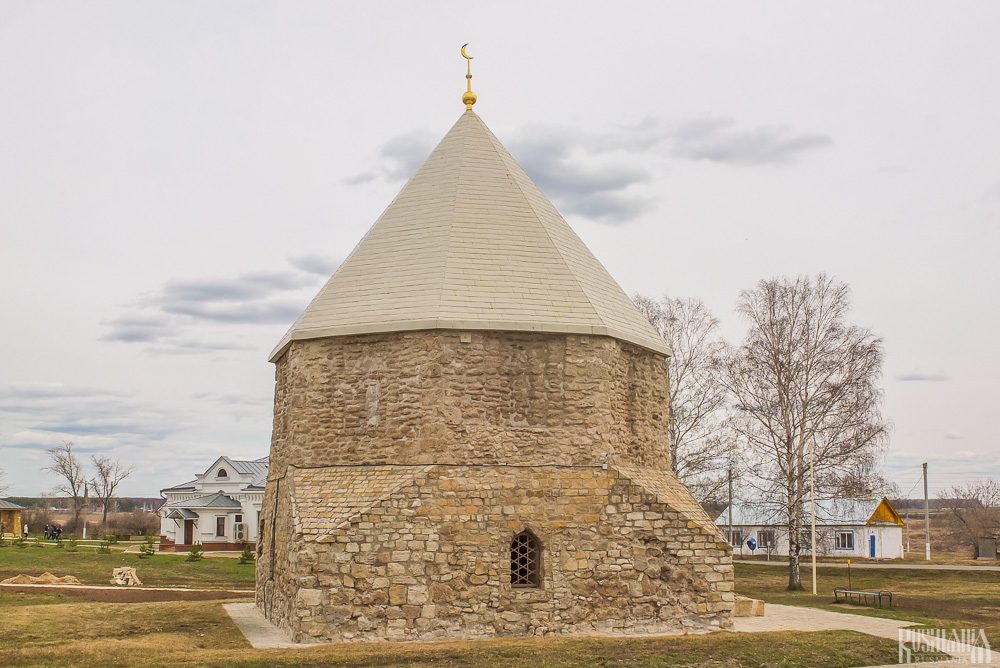
The Eastern Mausoleum also dates from the 14th century. Instead of a dome it is topped with a five-sided point. After the Uspensky Monastery was founded the Mausoleum was turned into a church dedicated to St Nicholas. In 1994 its crescent moon was returned.
Khan's Palace
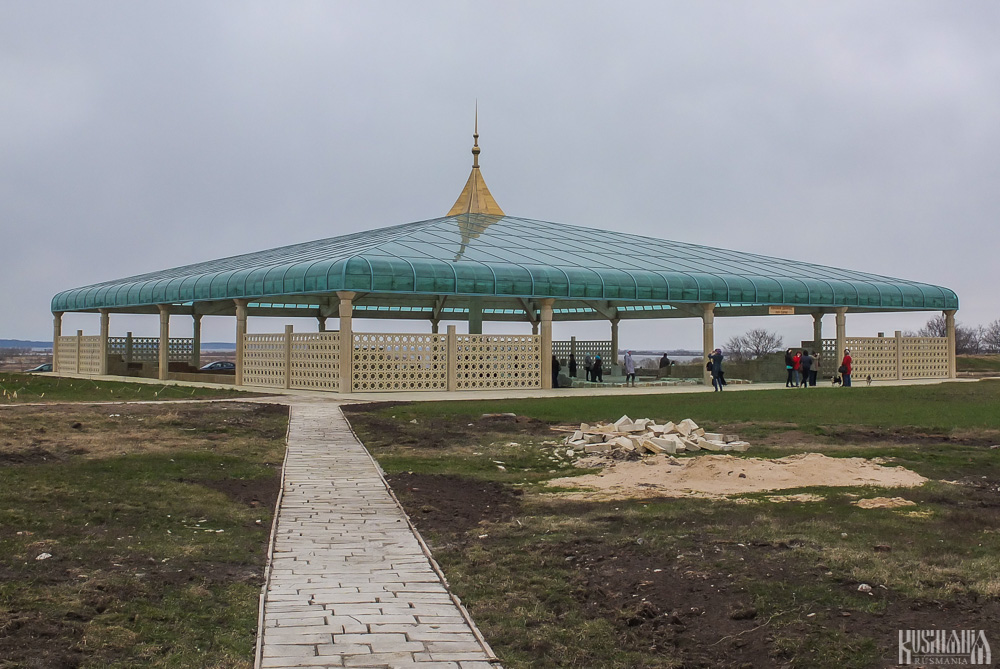
Located to the east of these structure is a modern tent-like structure which covers the ruins of what was once thought to be the Khan's Palace. The Palace is believed to date from the 13th century and was built on the site of earlier defensive moats. Also in the vicinity are several gift shops and the Doctor's House Museum Complex, which was opened in 2011 and is dedicated to medicine in Volga Bulgaria and in particular the Bulgar doctor Tadzhaddin al-Bulgari.
Black Chamber

Slightly further away from the centre of the museum-reserve is the Black Chamber which is one of the best surviving buildings here. According to legend when Tamerlane threatened the city the khan and his family sought shelter in the chamber. Tamerlane then covered it with wood and set it alight. The daughter of the khan then climbed out and agreed to marry Tamerlane if he released her brothers and gave them his best horses. Tamerlane did as she asked and she gave the horses to her brothers; as soon as her brothers escaped she threw herself onto the fire.
Khan Burial Vault and Small Minaret
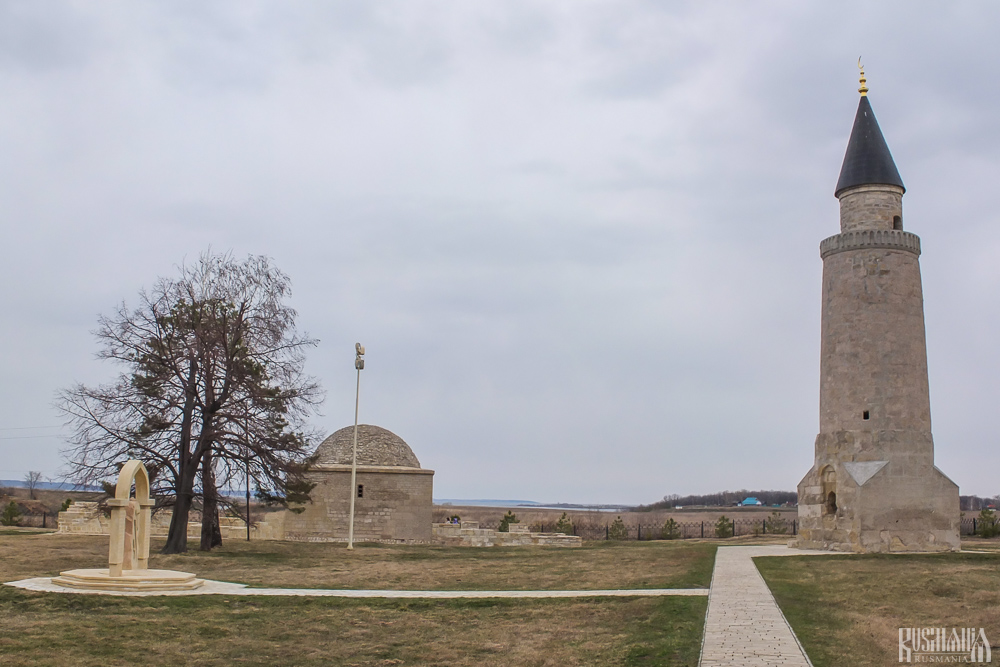
The museum-reserve's second minaret is known as the Small Minaret and is situated next to the Khan Burial Vault. Both structures are located on a cemetery and date from the 14th century, although they have been restored over the years. It is possible to go up the minaret.
Other Ruins
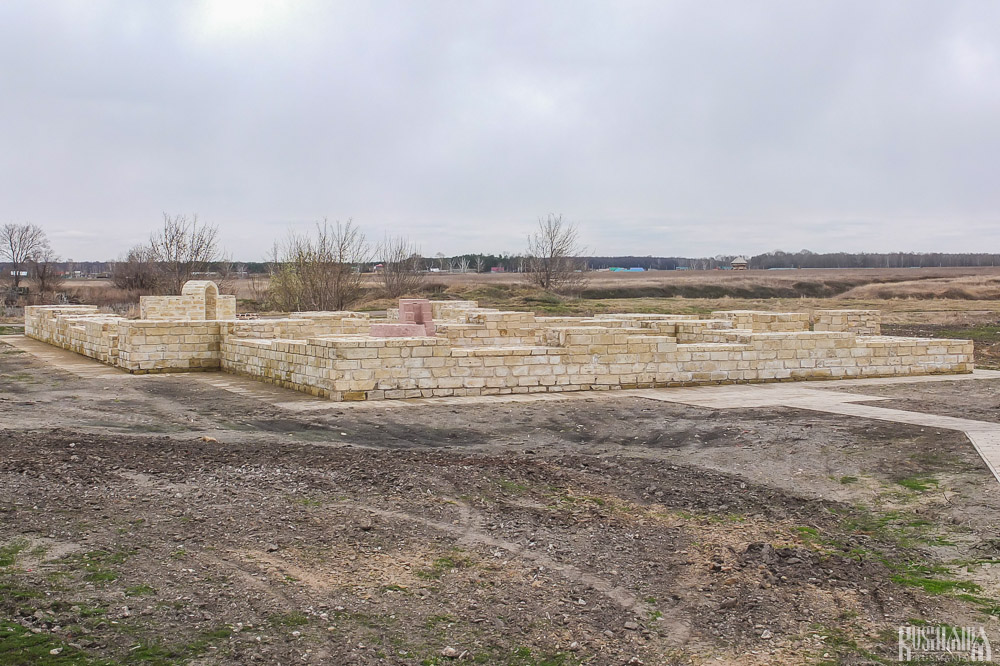
Several more ruins are dotted around the reserve such as the Khan's Banya and the White Chamber, which was also used as a banya. On the eastern boundary is a well known as either Captain's Well or Gabdrakhman's Well, which is said to contain healing water.
| Location | 67 Ulitsa Nazarovykh |
|---|---|
| Website | http://www.bolgar.info/ |

 History
History
